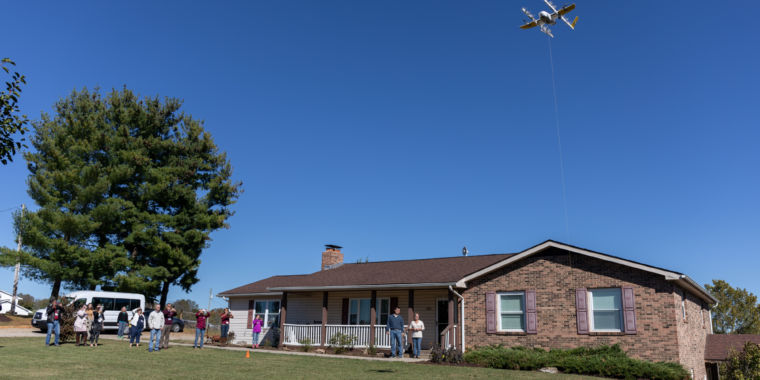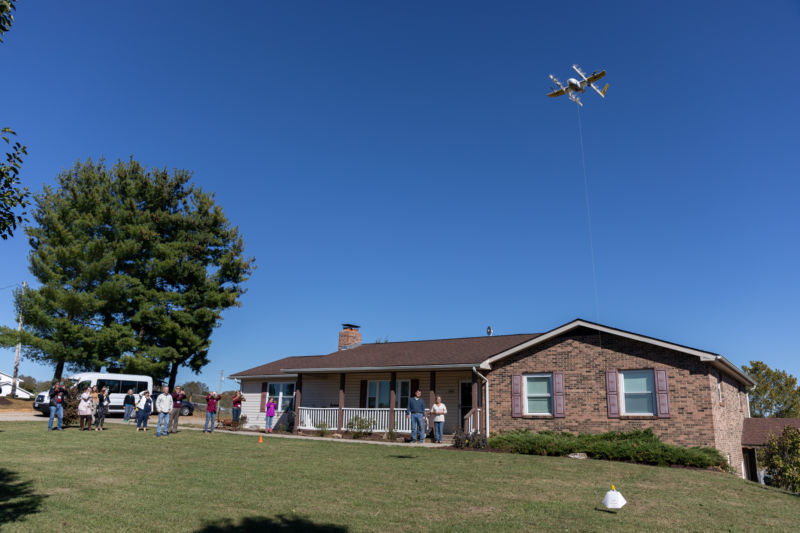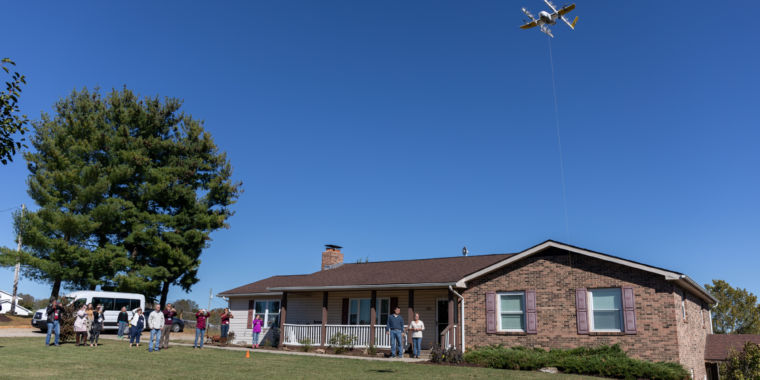
The future of flight —
The new system will help enable large-scale commercial use of drones.

Enlarge / Wing Aviation, a “moonshot” project of Google’s Alphabet, delivers a package to a customer in October 2019. Wing was the first drone operator sanctioned by the FAA to deliver packages to customers, but a large scale deployment of technology like this depends on better location tracking systems.
Logan Cyrus/Bloomberg via Getty Images
The Federal Aviation Administration is implementing a new system that will allow comprehensive nationwide tracking of unmanned aerial vehicles (UAVs)—commonly known as drones. The new system will enable regulators, law enforcement, and other interested parties to track drone movements and in some cases obtain identifying information. All new drones will be required to comply with the proposed rules within three years after the regulations go into effect—but that’s still months away.
The lack of a comprehensive system for drone identification and tracking has been a long-standing barrier to the adoption of commercial drone technology. Companies like Amazon and UPS, for example, have long dreamed of making package deliveries using unmanned vehicles. But such efforts were blocked by law enforcement agencies worried about unidentified drones being used for terrorism, drug smuggling, or other crimes.
The new proposal will create a comprehensive realtime database with information about almost every unmanned vehicle in the sky. That will allow law enforcement to quickly identify registered vehicles. And it will make it easier to catch vehicles that are flying without authorization.
In the new system, each UAV would be assigned a unique identifier. During each flight, a drone will be required to transmit its identity and location over the Internet to an online service provider authorized by the FAA to be part of the location-tracking system. A vehicle flying more than 400 feet from its base station will also need to broadcast this information directly from the aircraft.
To enhance privacy, vehicle operators will have the option to generate a random session ID for each trip instead of broadcasting a vehicle’s manufacturer-assigned serial number on every trip.
The new system is welcomed by commercial drone operators. Indeed, CNBC reports that the most common complaint from the commercial drone industry is that the FAA is moving too slowly.
For years, Congress has pressured the FAA to speed the development of a commercial drone industry. A 2012 law required the FAA to allow commercial use of drones by 2015 (the FAA missed the deadline). A 2016 law required the FAA to develop a remote identification standard by July 2018. The FAA missed that deadline too, and the agency is only formally publishing the rules now.
The FAA rule establishes a three-year transition period, but that period doesn’t start until the FAA has accepted public comments on its initial proposal, made appropriate adjustments, and issued a final rule. That rulemaking process can take many months. So the new system won’t be fully operational until 2023 at the earliest.









